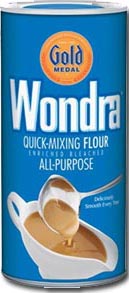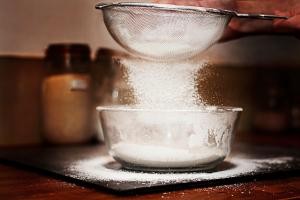The U.S. Centers for Disease Control reports that as of June 28, 2016, 42 people infected with the outbreak strain of Shiga-toxin producing E. coli O121 have been reported from 21 states.
 On July 1, 2016, General Mills expanded its recall to include additional lots of Gold Medal Flour, Signature Kitchens Flour, and Gold Medal Wondra Flour.
On July 1, 2016, General Mills expanded its recall to include additional lots of Gold Medal Flour, Signature Kitchens Flour, and Gold Medal Wondra Flour.
STEC O121 was isolated from samples of General Mills flour collected from the homes of ill people in Arizona, Colorado, and Oklahoma.
Four more ill people have been reported from four states. The most recent illness started on June 8, 2016. One new state, Indiana, has been added to the list of states with ill people.
Illnesses started on dates ranging from December 21, 2015 to June 8, 2016. Ill people range in age from 1 year to 95, with a median age of 18. Eighty-one percent of ill people are female. Eleven ill people have been hospitalized. No one has developed hemolytic uremic syndrome, a type of kidney failure, and no deaths have been reported.
 Guidance from the Food and Drug Administration (FDA) and CDC continues to warn that consumers should refrain from consuming any raw products made with flour. E. coli O121 is eliminated by heat through baking, frying, sautéing or boiling products made with flour. All surfaces, hands and utensils should be properly cleaned after contact with flour or dough.
Guidance from the Food and Drug Administration (FDA) and CDC continues to warn that consumers should refrain from consuming any raw products made with flour. E. coli O121 is eliminated by heat through baking, frying, sautéing or boiling products made with flour. All surfaces, hands and utensils should be properly cleaned after contact with flour or dough.






 at the Robert Koch Institute. Adult women (median age: 43, range: 1–90 years) were mainly affected.
at the Robert Koch Institute. Adult women (median age: 43, range: 1–90 years) were mainly affected.  Gaza (below, left) on the
Gaza (below, left) on the  Flour is mostly used to make noodles, dumplings and steamed buns in China, especially in the north.
Flour is mostly used to make noodles, dumplings and steamed buns in China, especially in the north.